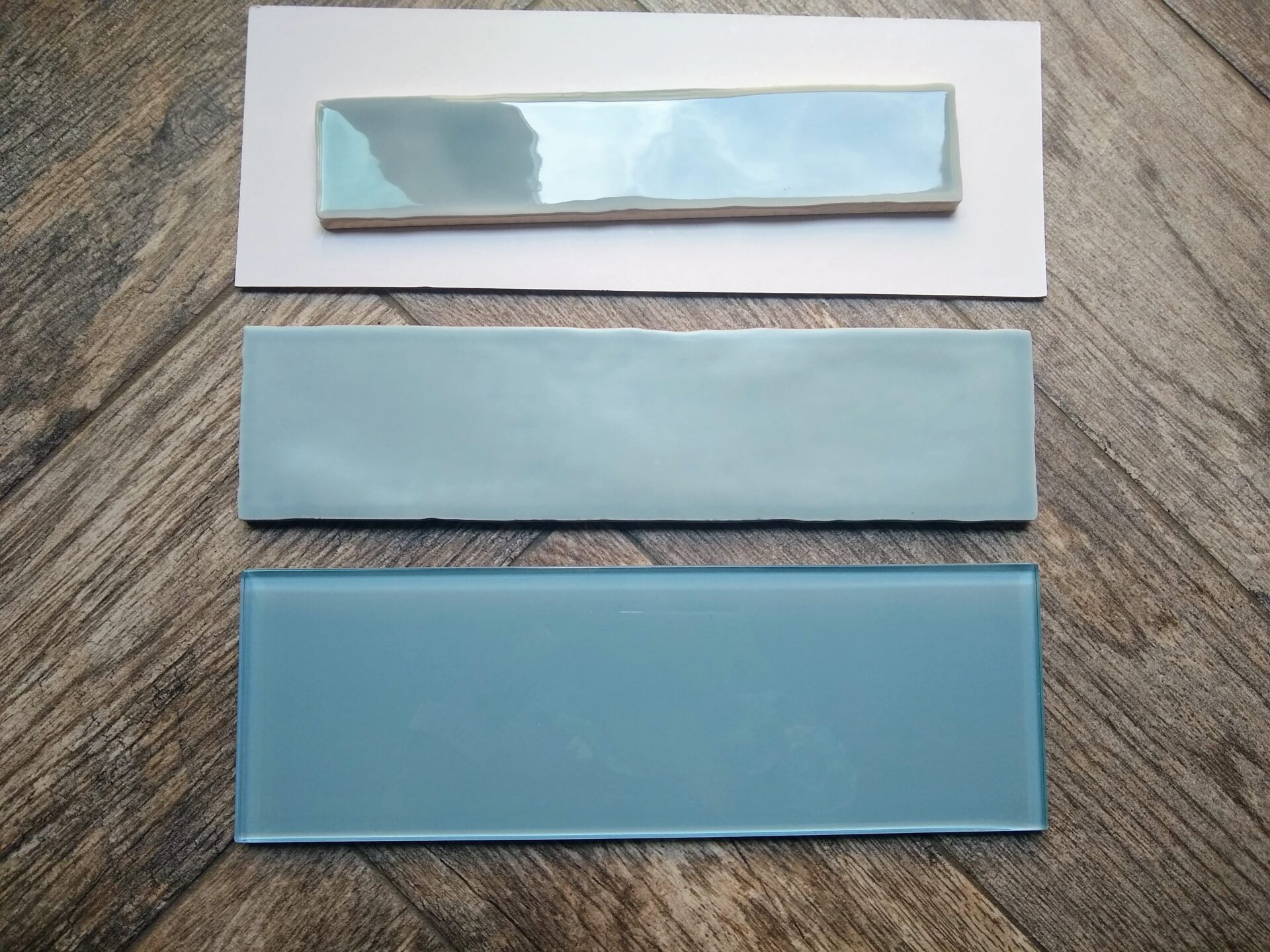Set foot in any tile shop and you may be overwhelmed by the various materials that tiles are made from. Porcelain and ceramic have long been the popular champions of the tile world, but what about some of these other materials? There is no single best option, as that will depend on many factors such as budget, style, and application. Your tile project should span the life of your home(or at least until you’re ready to remodel again!), so how do you select the right material for your project with so many options to choose from? We’ve put together a simple guide to help you navigate through the many materials to select the best one for your project. This isn’t a comprehensive list of tile materials, but it covers the most common materials we install.
- Ceramic– It’s hard to go wrong when selecting a ceramic tile. Ceramics are budget friendly, versatile, and come in 100s of colors and styles. Ceramics tend to be easy to work with and often are one of the cheapest materials to install. Ceramics are water resistant making them a great choice for bathrooms and basements. As an added bonus, ceramic tiles are easy to clean!
- Porcelain- It’s no wonder porcelain is so popular when you consider all it has to offer. It’s one of the most durable and long lasting materials, at a price point that’s tough to beat. While porcelain may be slightly more expensive than ceramic, it’s much more dense making it harder to break, chip and scratch. Like ceramic, porcelain comes in a dizzying array of style options and is water and stain resistant. Porcelain is also suitable for outdoor applications.
- Cement- Cement tile’s popularity has exploded recently with it’s authentic and quaint styling. The patterns are practically endless and with its tendency to develop patina over time, it’s easy to see why this material is so appealing. Cement tile is harder to work with, thus increasing the cost of installation, as it needs to be sealed before and after installation. Some grout colors can bleed into the tile and change its appearance so it’s an important consideration when selecting the type of grout used.
- Marble- If you’re looking to add depth and texture to a space, marble is a great option. Since marble is a natural stone, every piece is unique and distinctive. It’s also an ecofriendly option as it doesn’t require the use of chemical processing. Marble is expensive both to install and maintain. It’s prone to scratches, too if not maintained properly. Because of these drawbacks, many people who opt for marble use it for decorative accent features.
- Glass- The beauty of glass speaks for itself and because of its light reflecting properties, it can make a room feel bigger and brighter. It’s easy to clean, stain resistant, and is considered eco friendly, particularly if you choose a recycled glass tile. The major drawbacks to glass are that it’s typically much more expensive than porcelain or ceramic and that it may scratch easily if using an abrasive cleaning agent. When considering glass, it’s vitally important you hire an installer who has a lot of experience with this material. Any imperfections when spreading the adhesive may be visible through the tile after it’s installed.
- Granite- Both durable and versatile, Granite tends to be the less expensive natural stone option. However, due to its weight and need for a completely level surface, it may not be suitable for every space. Factoring in those considerations, installing granite tile is more expensive. Granite also needs to be resealed periodically.
- Limestone- Possesses a natural beauty adding texture and depth to any space, indoors and out. Limestone isn’t as hard as marble but it’s relative softness feels good underfoot while still being a durable material. Being a porous natural stone, limestone needs to be sealed periodically to protect it from stains.
- Travertine- A relatively inexpensive natural stone, Travertine is extremely durable and provides a timeless appeal with its natural beauty. It is very porous, requiring it to be sealed periodically to avoid stains and watermarks. As with any stone material, acidic cleaning agents can damage its appearance.
- Metal- Creates a modern and distinct appearance, while reflecting light to make a space feel bigger. While metal tiles are easy to keep clean, special care has to be taken to avoid stains particularly from acidic foods like tomatoes. Such damage can also be caused from using the wrong type of cleaning agents. Metal tiles may develop a patina over time, which can be a pro or a con, depending on the look you’re after.
- Vinyl- Also known as luxury vinyl tile (LVT) is both durable and affordable. LVT is a great choice for areas where moisture is present like bathrooms, kitchens and basements because it doesn’t absorb water like hard wood can. LVT is stain, scuff and slip resistant, too.
With any tile you choose, you should always refer to the manufacturer’s specifications for usage, cleaning, need for sealant, grout choice, etc. No matter what material you select, good quality tile work has the biggest initial impact upon any room. The single biggest factor to achieving magazine-like quality results is a flawless install. We take a great deal of pride in our work and follow the Tile Council of North America’s guidelines for a standardized tile installation to ensure your project is built with the industry’s current accepted techniques and processes. With over 20 years of experience installing tile, you can rest assured your tile project will be handled expertly and professionally.

